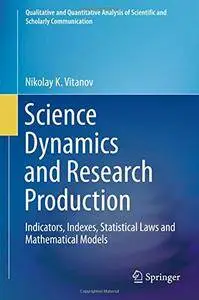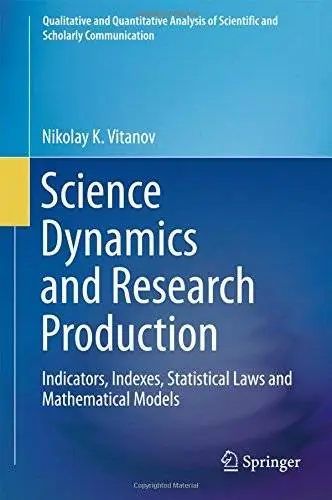Science Dynamics and Research Production: Indicators, Indexes, Statistical Laws and Mathematical Models (Qualitative and Quantitative Analysis of Scientific and Scholarly Communication) by Nikolay K. Vitanov
English | 19 Aug. 2016 | ISBN: 3319416294 | 304 Pages | PDF (True) | 2.87 MB
English | 19 Aug. 2016 | ISBN: 3319416294 | 304 Pages | PDF (True) | 2.87 MB
This book deals with methods to evaluate scientific productivity. In the book statistical methods, deterministic and stochastic models and numerous indexes are discussed that will help the reader to understand the nonlinear science dynamics and to be able to develop or construct systems for appropriate evaluation of research productivity and management of research groups and organizations. The dynamics of science structures and systems is complex, and the evaluation of research productivity requires a combination of qualitative and quantitative methods and measures. The book has three parts. The first part is devoted to mathematical models describing the importance of science for economic growth and systems for the evaluation of research organizations of different size. The second part contains descriptions and discussions of numerous indexes for the evaluation of the productivity of researchers and groups of researchers of different size (up to the comparison of research productivities of research communities of nations). Part three contains discussions of non-Gaussian laws connected to scientific productivity and presents various deterministic and stochastic models of science dynamics and research productivity. The book shows that many famous fat tail distributions as well as many deterministic and stochastic models and processes, which are well known from physics, theory of extreme events or population dynamics, occur also in the description of dynamics of scientific systems and in the description of the characteristics of research productivity. This is not a surprise as scientific systems are nonlinear, open and dissipative.



